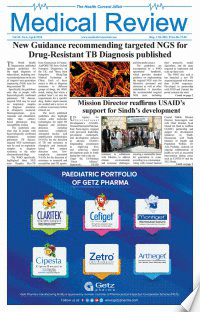Blood transfusion is an essential component of health care that contributes to saving lives and improving the quality of life for millions of people worldwide. Blood transfusion is most commonly used in caring for women suffering from bleeding associated with pregnancy and childbirth, children suffering from severe anaemia due to malaria and malnutrition, and victims of trauma, emergencies, disasters and accidents. It is also used to support advanced medical and surgical procedures, including cardiovascular surgery and transplantation in countries with advanced health care systems. Blood and blood products1 are essential in the treatment of blood and bone marrow disorders, as well as immune deficiency conditions. Universal and timely access to safe blood and blood products, and their appropriate use, are essential components of good health care provision.
The demand for blood and blood products continues to grow as a result of several factors, including the growth and aging of the population, and the availability of, and access to, increasingly sophisticated medical and surgical procedures. Ministries of health are responsible for meeting the increasing clinical needs of patients for safe blood and blood products and for ensuring the quality, safety, availability and equitable distribution of these products through the establishment of an effective national blood supply and transfusion service that is integrated into the national health system.
However, despite the availability of effective measures to ensure the quality and safety of blood and blood products, there is still significant risk associated with their clinical use, including adverse reactions and transmission of transfusion-transmitted infection (TTI). The safety and availability of blood transfusion depends on the:
• availability of a well-organized and adequately funded nationally coordinated blood transfusion service, with an effective blood component programme under well-defined regulatory oversight;
• collection of blood and blood components from voluntary, non-remunerated and regular blood donors from low risk populations;
• quality-assured testing of all donated blood, including screening for TTIs, ABO and Rhesus D grouping, and compatibility testing;
• reduction in unnecessary transfusions through appropriate clinical use and safe administration of blood and blood products; and
• implementation of effective quality systems in all areas, including quality management, development and implementation of quality standards, effective documentation systems, training of all staff and regular quality assessment, including haemovigilance, based on a national quality policy and strategy.
WHO has been at the forefront of the movement to improve blood and blood product safety and availability as mandated by successive World Health Assembly resolutions, the earliest dating from 1975. In 1987, at its 34th session, the WHO Regional Committee for the Eastern Mediterranean endorsed resolution EM/RC34/R.9 on the development of national blood transfusion services in the countries of the Eastern Mediterranean Region. However, significant challenges remain in providing access to sufficient, affordable and sustainable supplies of blood and blood products, while ensuring the quality and safety of these products in the presence of known and emerging threats to public health. In response to this situation, the strategic framework for blood safety and availability (2016–2025) was endorsed by the 63rd Session of the Regional Committee in 2016 in resolution EM/RC63/R.6. The strategic framework is intended to guide countries in developing and strengthening national blood systems to ensure the continuity, sufficiency, sustainability and security of national supplies of safe and efficacious blood and blood components to meet national needs. It was developed through broad consultation with national blood transfusion service providers, regional and international organizations, and experts working in the field. The strategic framework, with its accompanying framework for action and priority interventions, will guide countries in developing and strengthening national blood systems to meet national needs. Courtesy WHO


